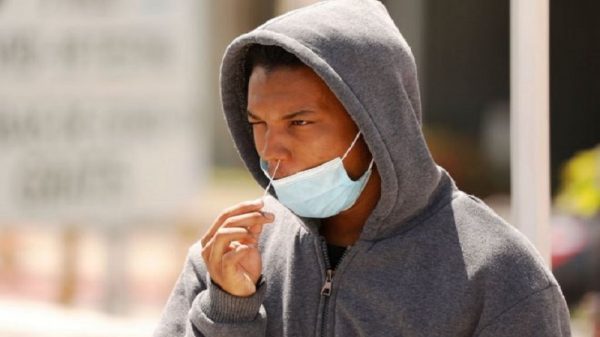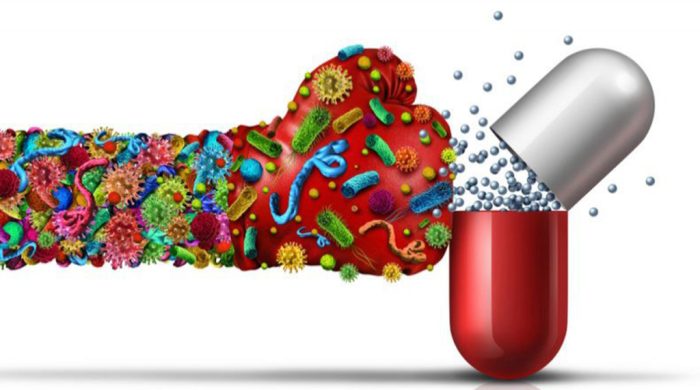Coronavirus tests: Swabs don’t damage the brain and other claims fact-checked

- Update Time : Saturday, July 18, 2020
- 186 Time View

Claims that coronavirus tests can harm people are circulating on social media.
We investigated the claims in some of the most widely shared posts.
The nose swab can’t damage the brain
A picture showing a swab test being taken has been circulated widely on Facebook and Instagram along with claims that the swab is taken at the “blood-brain barrier”.
The idea you could access the blood-brain barrier through a swab up the nose is a complete misunderstanding of what it is and how it works.
The brain has lots of layers of protection. First and mostly obviously is the skull and within that, the brain is further encased in a protective membrane and fluid.
Within the blood vessels that line the brain, the blood-brain barrier is a tightly packed layer of cells that stops molecules circulating in the blood from passing into the brain, while allowing in things like oxygen and nutrients.
A swab stick inserted into the nose would need to break through multiple layers of tissue and drill through a bone and into the blood vessels to reach the blood-brain barrier.
“The swab cannot reach the blood brain barrier without significant force that breaks several layers of tissue and bone. We have not seen any complications from Covid swabs in our neurology practice”, says Dr Liz Coulthard, a committee member of the British Neuroscience Association (BNA).
The nasopharyngeal swab checks for coronavirus in the back of the nasal passage and is one of a range of swabbing techniques.
A combined nose-and-throat swab is routinely used to test for Covid-19 in the UK.
“I have swabbed many patients while working in hospital and also do these swabs on myself every week as a volunteer in a trial. It is unusual to have something that far up your nose – the swab can feel itchy or tickly but it shouldn’t be painful,” says Dr Tom Wingfield of the Liverpool School of Tropical Medicine.
The false claims started to emerge in US-based Facebook accounts on 6 July and some versions include calls to refuse testing altogether.
Some of these have been rated “false” by fact-checking organisations on Facebook
We’ve found the same graphic appearing in Romanian, French, Dutch and Portuguese posts, each generating thousands of engagements.
Testing kits won’t infect you with coronavirus
Reports of contaminated test kits have been misinterpreted to imply that taking a test will give you coronavirus.
In fact, headlines shared about contamination refer to a report on ineffective tests caused by sloppy lab practices at the US Centers for Disease Control and Prevention (CDC) early in the pandemic. This doesn’t mean that being tested will give you the virus.
In a post shared more than 3,000 times on Facebook this week, a fan page for Fox News host Tucker Carlson shared a news article about contaminated test kits saying: “You want Covid-19? This is how U get it!”
The full Washington Post article, which was published in June, details the findings of a federal review which found that faulty tests and lab procedures caused delays to the rollout of the CDC’s testing programme. It doesn’t suggest that faulty test kits could have passed on the virus to any patients.
The article is behind a pay wall, which means most people seeing posts sharing the article would read the headline out of context.
Fact checkers in the US and India have debunked wilder claims that the coronavirus test is a plot funded by the Gates Foundation to implant a microchip into patients. These false claims, shared thousands of times on Facebook, are similar to conspiracy theories we looked into previously about a sinister micro-chipping programme linked to a potential vaccine.
There is no evidence to suggest there is any micro-chipping programme linked to the coronavirus pandemic and the Bill and Melinda Gates Foundation has denied the claims.
‘Why can’t you just breathe on the swab?’
A meme asking, “If Covid was really carried on your breath, why can’t you just breathe on the swab? Why do they have to shove the swab to the very back of your nose?” has been engaged with at least 7,000 times on Facebook and Instagram.
Coronavirus spreads when an infected person coughs or sneezes small droplets – packed with the virus – into the air. This doesn’t mean that just breathing on a swab would collect enough material to conduct a laboratory test though.
We spoke to Public Health England about this who say taking a swab from inside the nose or throat yields more accurate test results.
If you only breathe on a slim swab head, you might not catch the viral particles or the cells that carry the virus. However, if you insert the swab in the nose and throat and rotate it at the site of infection, you are more likely to get infectious material that will yield a result.
Faking virus-free certificates in Bangladesh
Finally, we’ve taken a look at the growing scandal in Bangladesh of faked certificates indicating a person does not have coronavirus.
Several people have been arrested there for issuing bogus documentation showing negative test results to people who haven’t actually been tested.
These documents have value because they are often required by migrant workers to show that they are virus-free when they arrive at their destination. Bangladesh relies heavily on income from its citizens working overseas.
In the latest incident, a hospital owner, accused of falsifying thousands of tests, was detained after a nine-day hunt near the Indian border, disguised as a woman.
Criminal gangs are also putting adverts on social media to find potential buyers.
Strangely, fake certificates indicating positive tests are also reported to be on sale in Bangladesh – offering up the chance for public servants to take leave from work.
Additional reporting by Olga Robinson and Shayan Sardarizadeh.

















